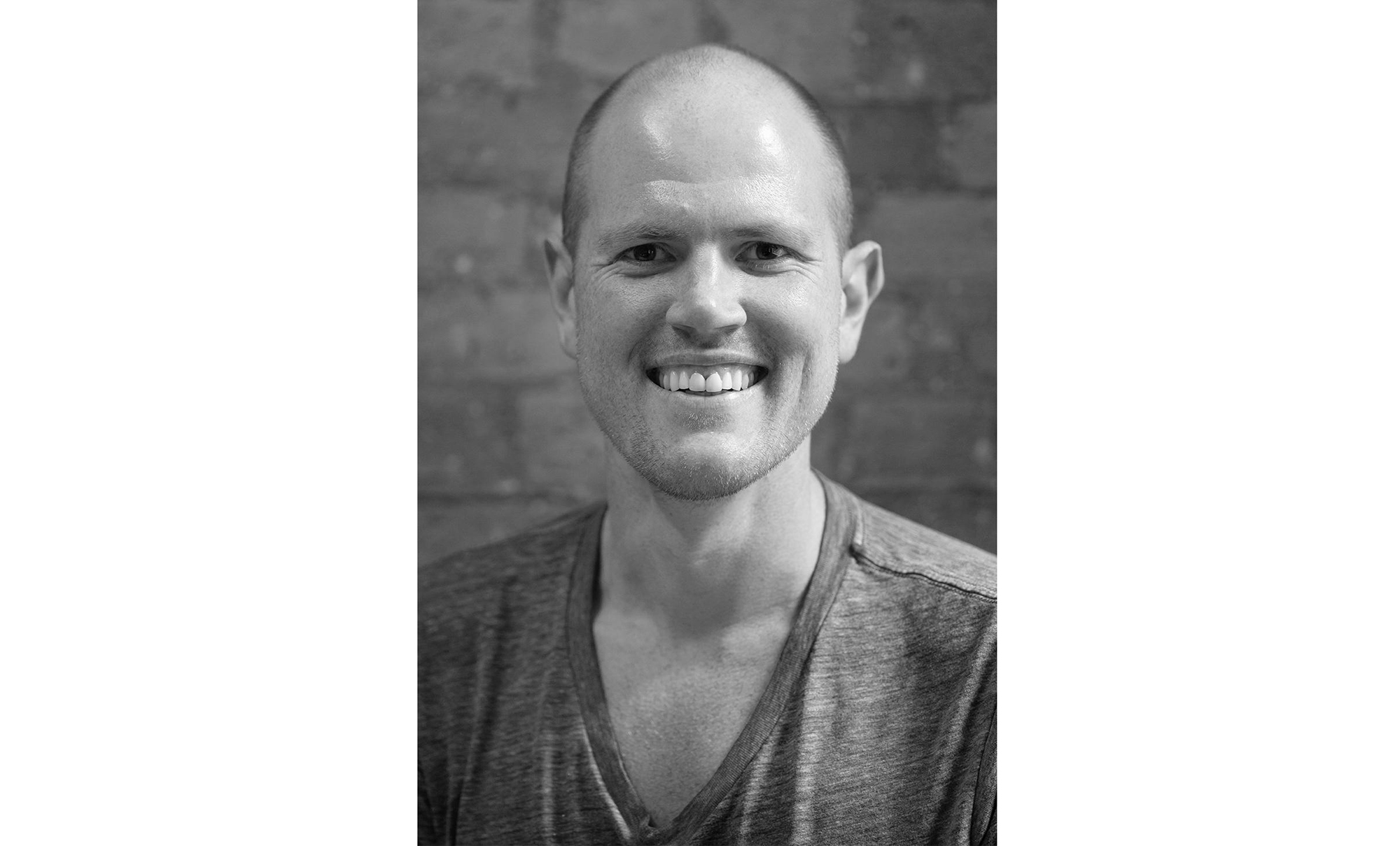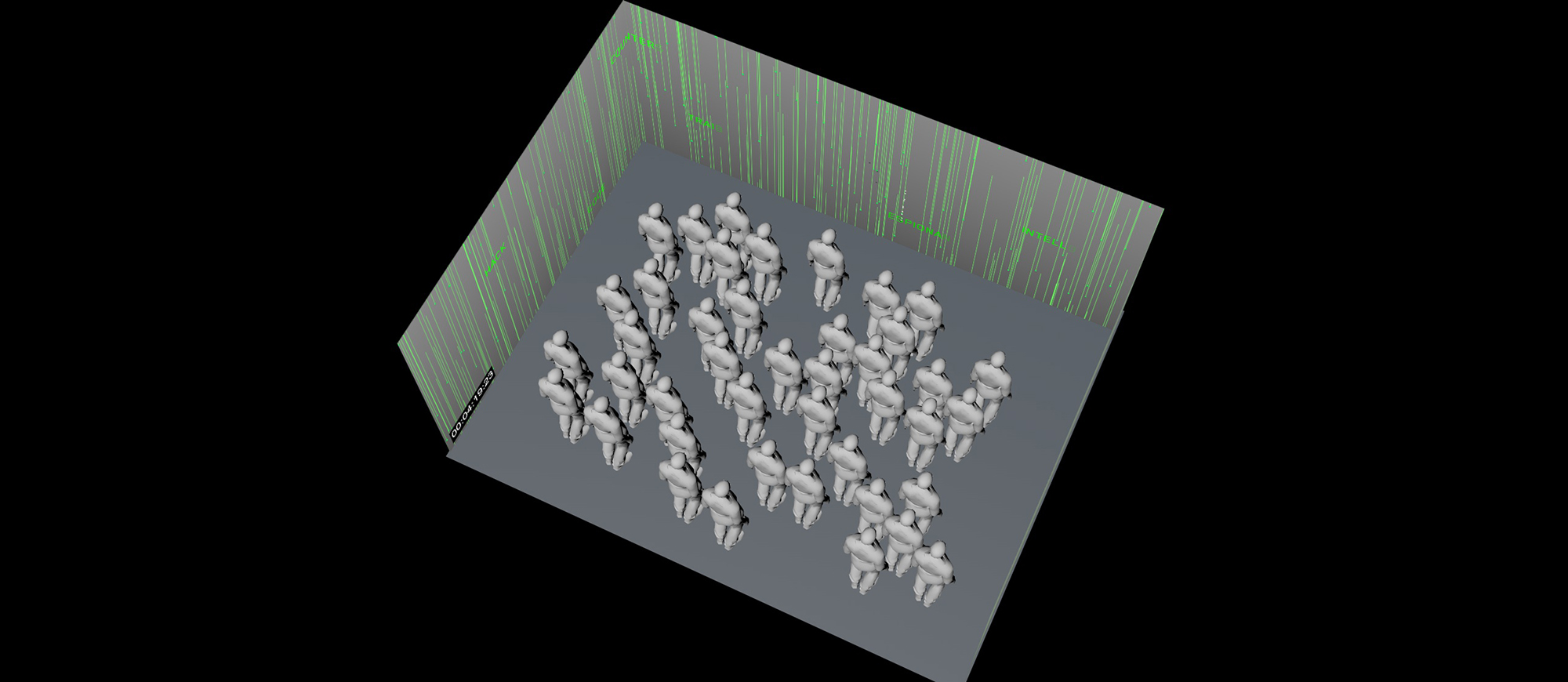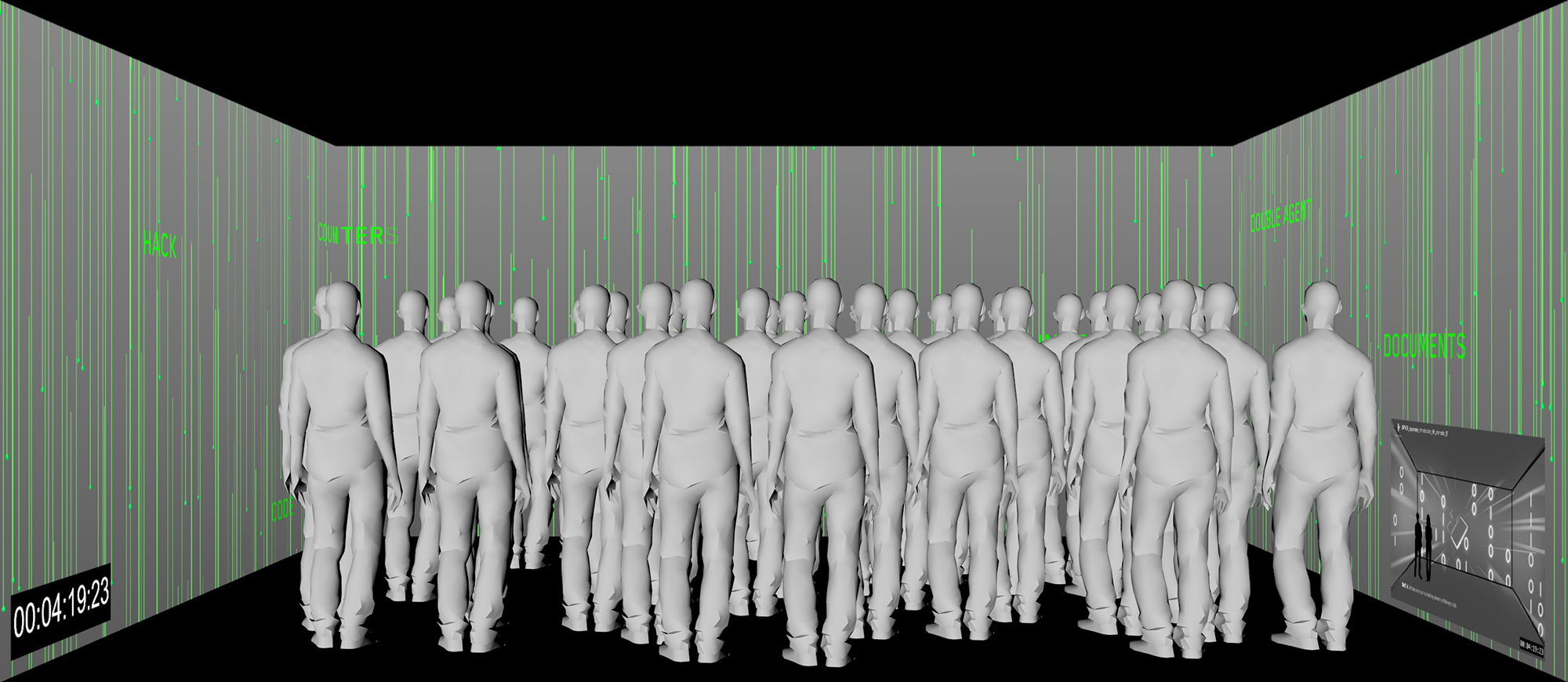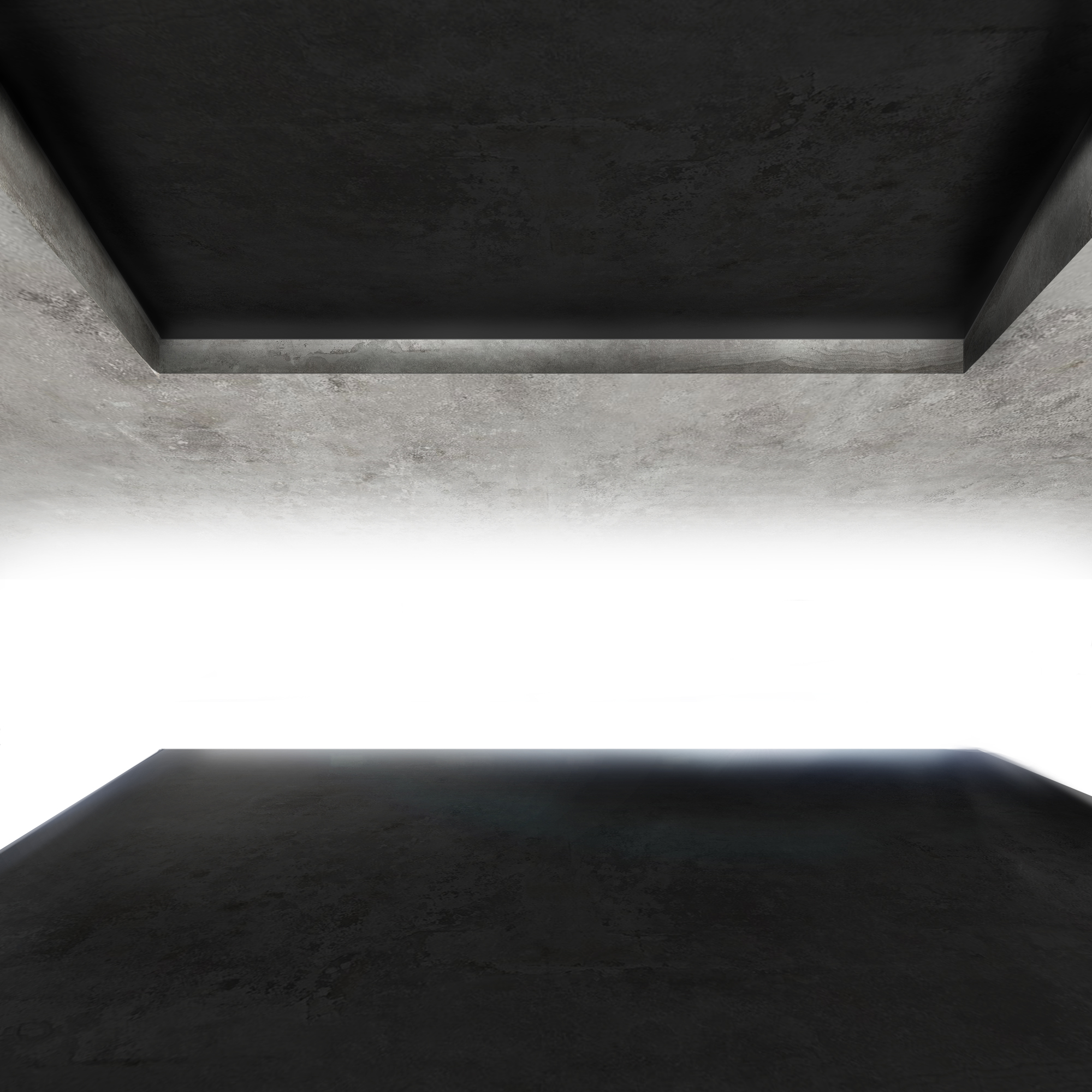New York’s Spyscape is not just a contemporary museum devoted to all things espionage. It’s also a place where visitors get to find out what type of spying best suits them and get a little taste of what spies really do. In keeping with the plot of most spy dramas, the adventure begins with a briefing, only in this case, the briefing room is the largest passenger elevator in the world.
Knowing that the elevator ride needed to be immersive and theatrical enough to captivate visitors from the start, Spyscape turned to Territory Studio, which is known for designing compelling screen graphics and VFX for Hollywood spy thrillers and military dramas. Using Maxon Cinema 4D, Insydium X-Particles, Adobe After Effects, and Red Shift, Territory concepted and created a three-minute briefing that plays at a slow 8' per minute on three of the elevator’s walls on floor-to-ceiling screens augmented by surround sound.
Territory’s Nick Lyons was the creative lead on the project. Here he explains their process from creating the initial storyboards to designing a convincing spy narrative, including a peek at the wood-paneled corridors of an M16 outpost tucked into an ordinary office building and a view of surveillance satellites from space.

Meleah Maynard: Were there particular projects that helped Territory get this project?
Nick Lyons: Territory’s film work brings in quite a few projects because it has such a large audience. But there were a few experiential projects that helped us get the Spyscape job, like the interactive Mission Control installation that we designed and built for Barbican Centre’s blockbuster summer exhibition Into the Unknown: A Journey Through Science Fiction. We also created animations for a London College of Fashion year-end event, an immersive data experience about neglected tropical diseases, and a projection-mapping installation for Clarins.

MM: Tell me a about the role you played on the project.
NL: I was creative lead on this project and supported creative director John Sunter and senior producer Alice Ceresole in bringing the client’s concept to life. In addition to providing creative and technical direction, I worked closely with the rest of the team, including Roland Lukacsi, Dorian Thomas, and Melanie Keyzor throughout the project. Once we had sign off on the concept and direction, we were given free rein to build the story, choose the tools we would use, and figure out how it would work, including each scene and the transitions between them.

MM: How long have you been at Territory?
NL: I’ve been working with Territory now for three years. I currently call London home, but I moved here from LA where I used to work at Blur Studio. Blur is known for their video game cinematics and film work. I feel lucky to have worked with them and had the chance to be a part of the great culture and work they are known for. It allowed me to open up a dialogue with Territory once I moved to London. I’ve always loved traveling, and I really enjoy experiencing new cultures. Territory’s team is as diverse as the work we do, so in that respect, it’s an incredible place to learn from others with different backgrounds and experiences.

MM: Describe the brief that you got at the start of the project.
NL: We were asked to produce the final “briefing” video and audio for the lift. The brief was really loose. They liked our pitch to create an immersive experience where visitors would feel as if they were part of a spy film from the minute they put on their Spyscape wristbands. Our job was to design something with a sense of realism that introduced people to the world of spying and explained how we are all spies now, thanks to social media and the kinds of surveillance that goes on routinely, like CCTV cameras and cell phone monitoring.

MM: What sorts of references did you look to for Spyscape?
NL: We focused on how spying and surveillance is taking place around us all of the time, not just in the sense that someone is following you, but in invisible ways. Data is being gathered every moment we are online or connected via our phone to a website, GPS, apps, and other devices. Spyscape is very much about modern-day spying, but we made sure to pay tribute to the older spying archetypes as well.

MM: How did creating this for a crowded, moving elevator complicate your process?
NL: This project had several unique technical hurdles to overcome during production, as the elevator was being built and while we were designing and animating. So it was important that our concept was flexible. We approached this much differently than a typical project where the audience is looking directly ahead at the screen. As the content is wall-high and wraps around the elevator, a member of the audience could be focusing on a different section of the screen at a given moment. We decided to try to focus the audience towards the center of the middle screen, but if they happened to be looking around at the two side screens, we added relevant storytelling content to make sure any direction you looked helped move the story forward for you.

That was probably our biggest technical challenge. They sent us a schematic of the elevator, and measurements of the screens so we could essentially create three projections, one out front and the others on two sides. The illusion was that the front screen was moving forward or up and down while the side screens were always moving in unison with the depth of the front screen, so they wouldn’t look flat or distorted. To do that, we used Cinema’s CV VR cam to customize a 360 rig. The forward camera, and left and right camera, were each a separate render. If you looked at the actual video file we sent them, the front center third looks normal, but the two side thirds look quite skewed on a flat screen. But when you watch it in the moving lift, the two side screens look correct in comparison to the front.

We really had to nail that illusion, so we did a lot of animation tests. We built the lift in Cinema 4D using the specifications they sent us. Next, we funneled our test animations through it to make sure they wrapped around the walls correctly, gave the right feeling of depth, and didn’t have issues with visible seams between the renders. Once we finished building the life, it was time to test our footage to see if the animations would work correctly with the projectors, walls, and space. They trusted us, and all our testing paid off, and the installation went off without a hitch.

MM: What did you find most interesting about this project?
NL: It’s such a different world working on experiential design. Getting the chance to immerse people in your own story and graphics is a really unique thing. Artists don’t get to build this kind of experience very often, and it’s so enjoyable to get to create a whole immersive world and all of the bits of detail that go into that. We’ve been doing quite a bit of this over the past couple of years.

There always seems to be a VR, experiential, or 360° project in the studio. These projects take you out of your comfort zone and force you to think differently about how you animate and envision the world you’re making. They are seamless experiences where the viewer becomes totally immersed in what you’ve made. Watching films and content like we’ve done for decades will never completely change, but how we experience them may, and that’s what excites us at Territory about these types of projects.
Credits
Producer: Alice Ceresole
Creative Director: John Sunter
Creative Lead: Nick Lyons
Animators: Dorian Thomas, Melanie Keyzor, and Roland Lukacsi
Sound designer: Tim Cowie
Meleah Maynard is a freelance writer and editor in Minneapolis, Minnesota.